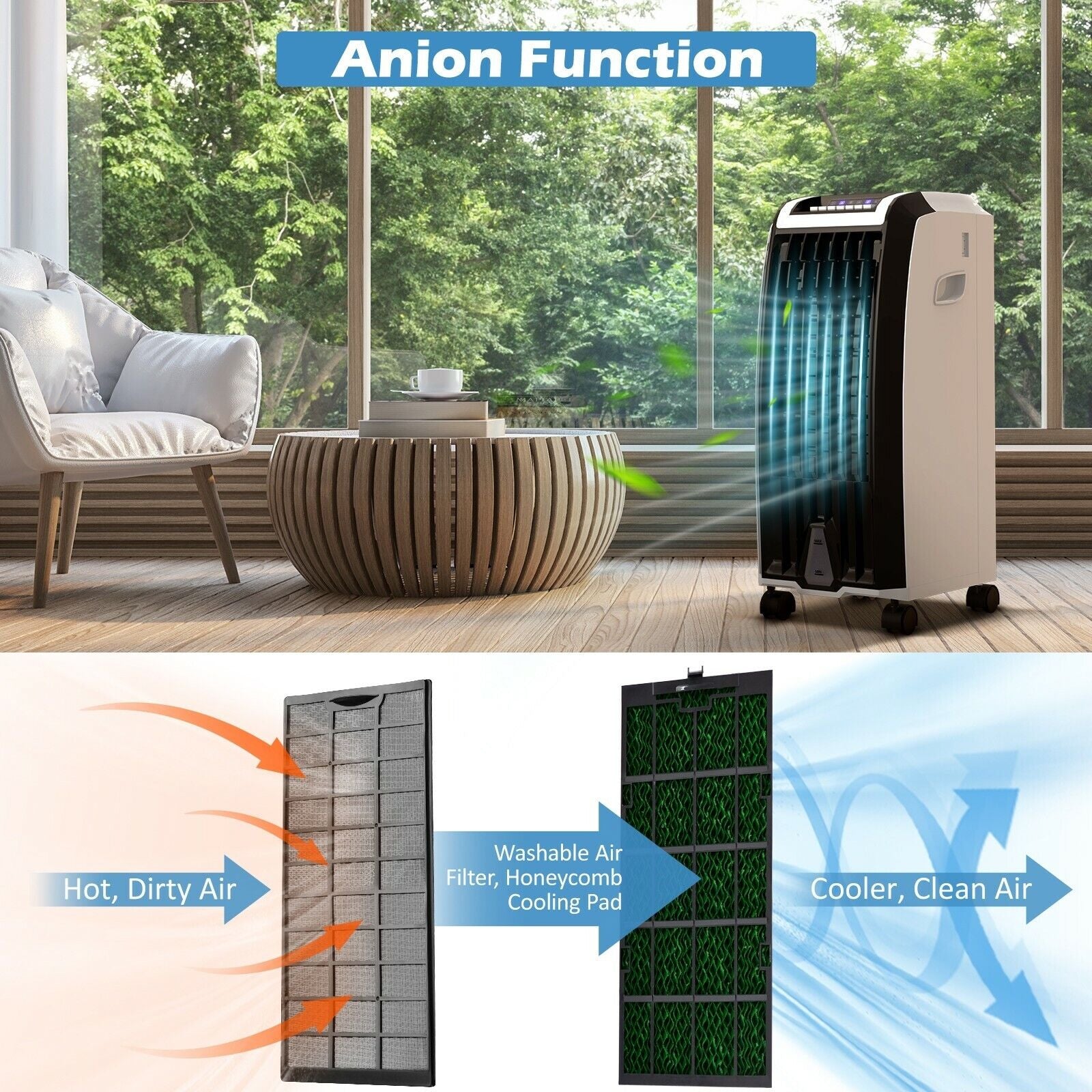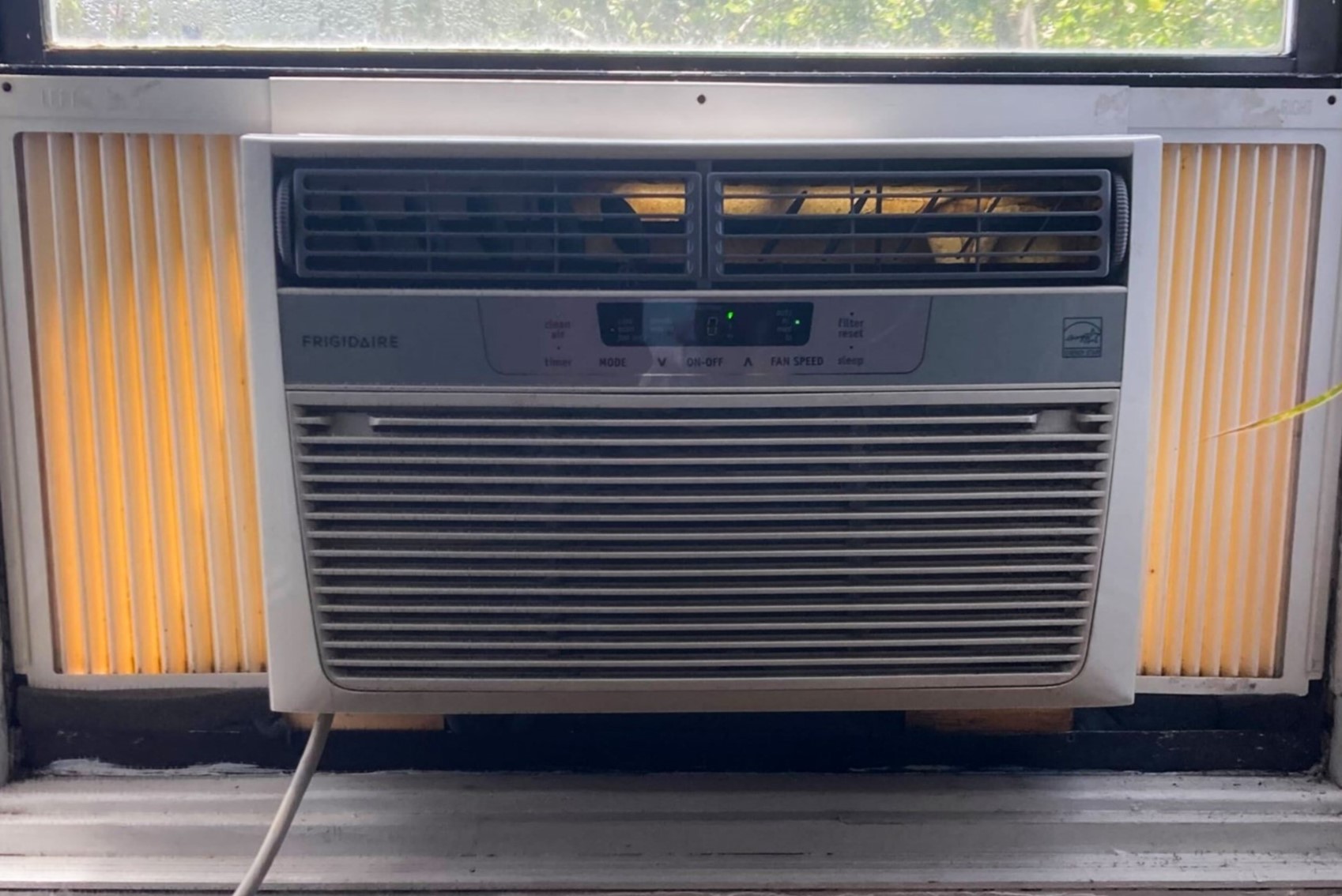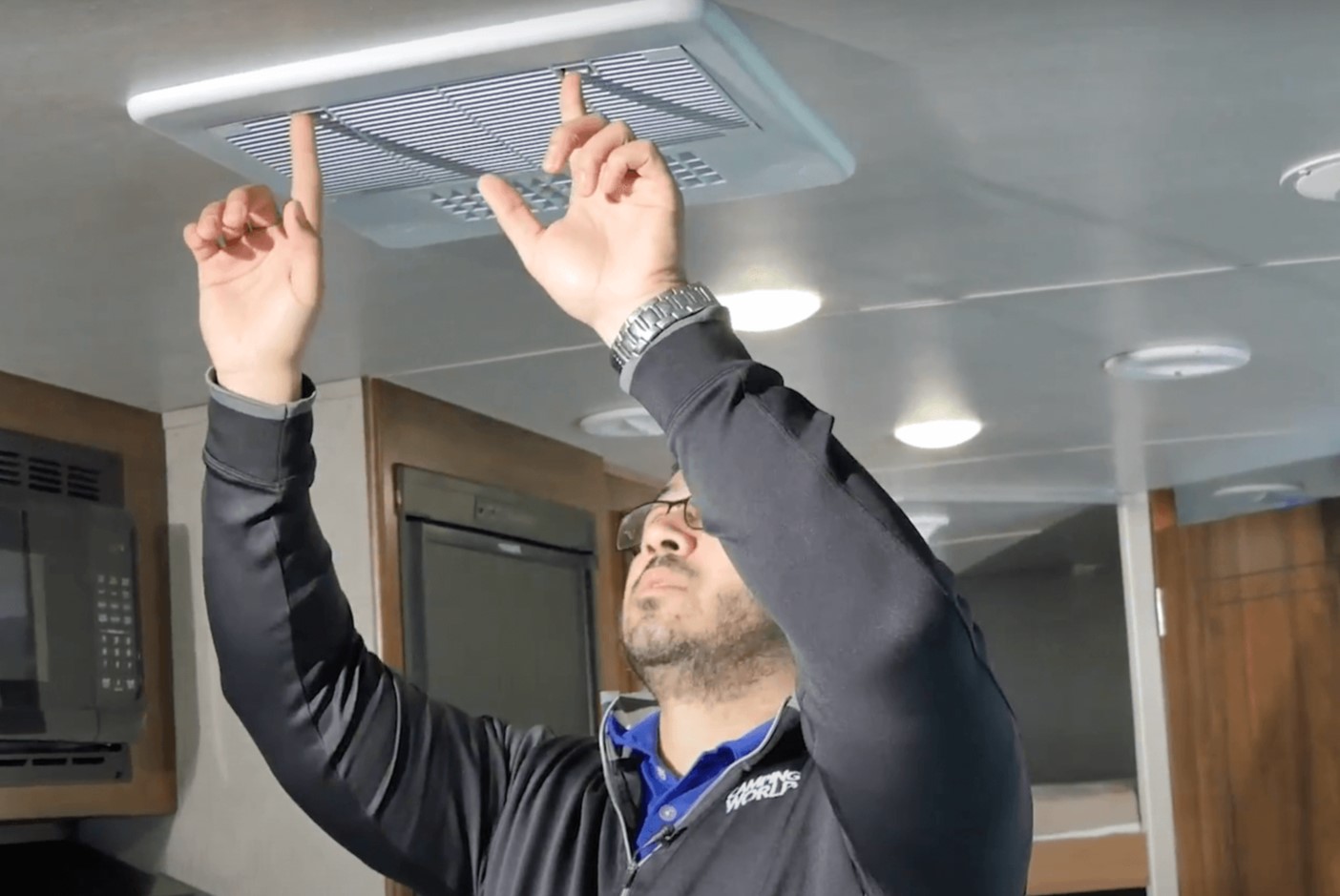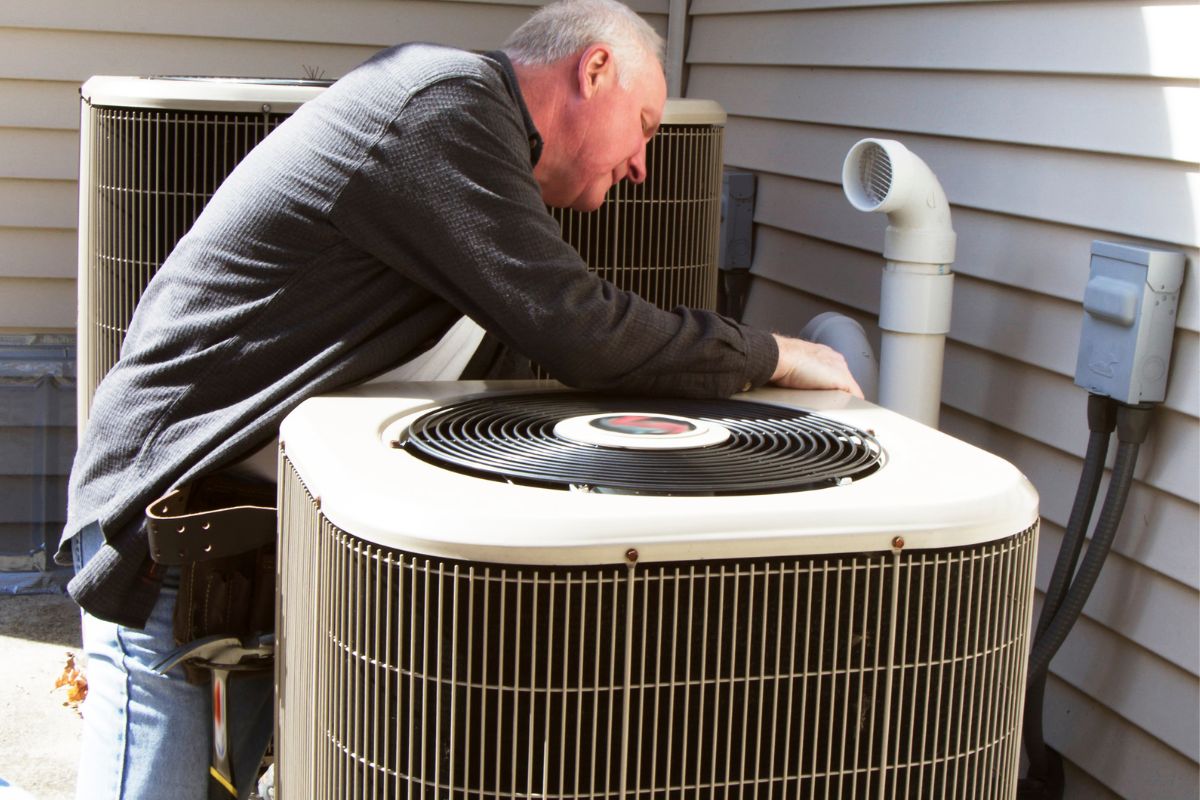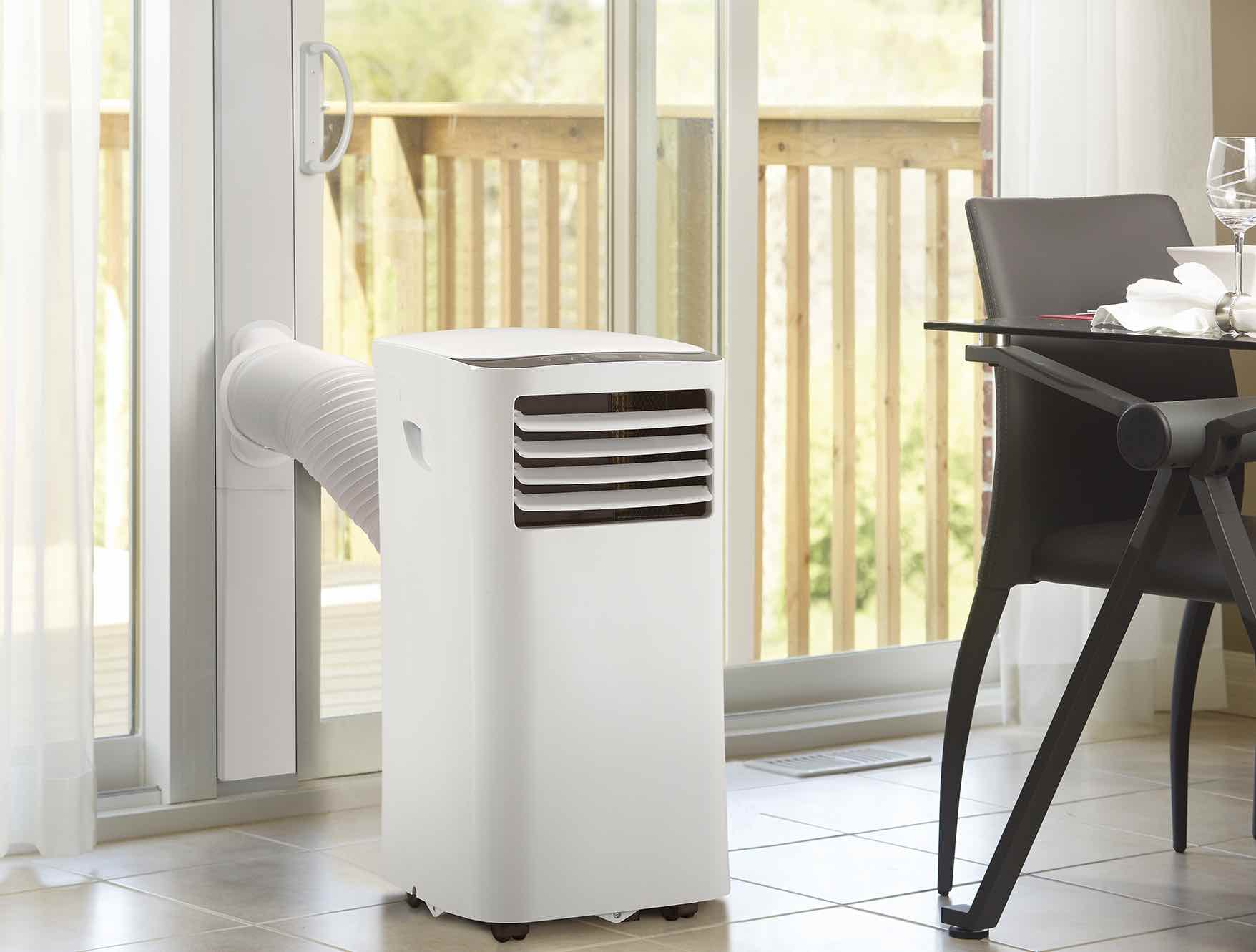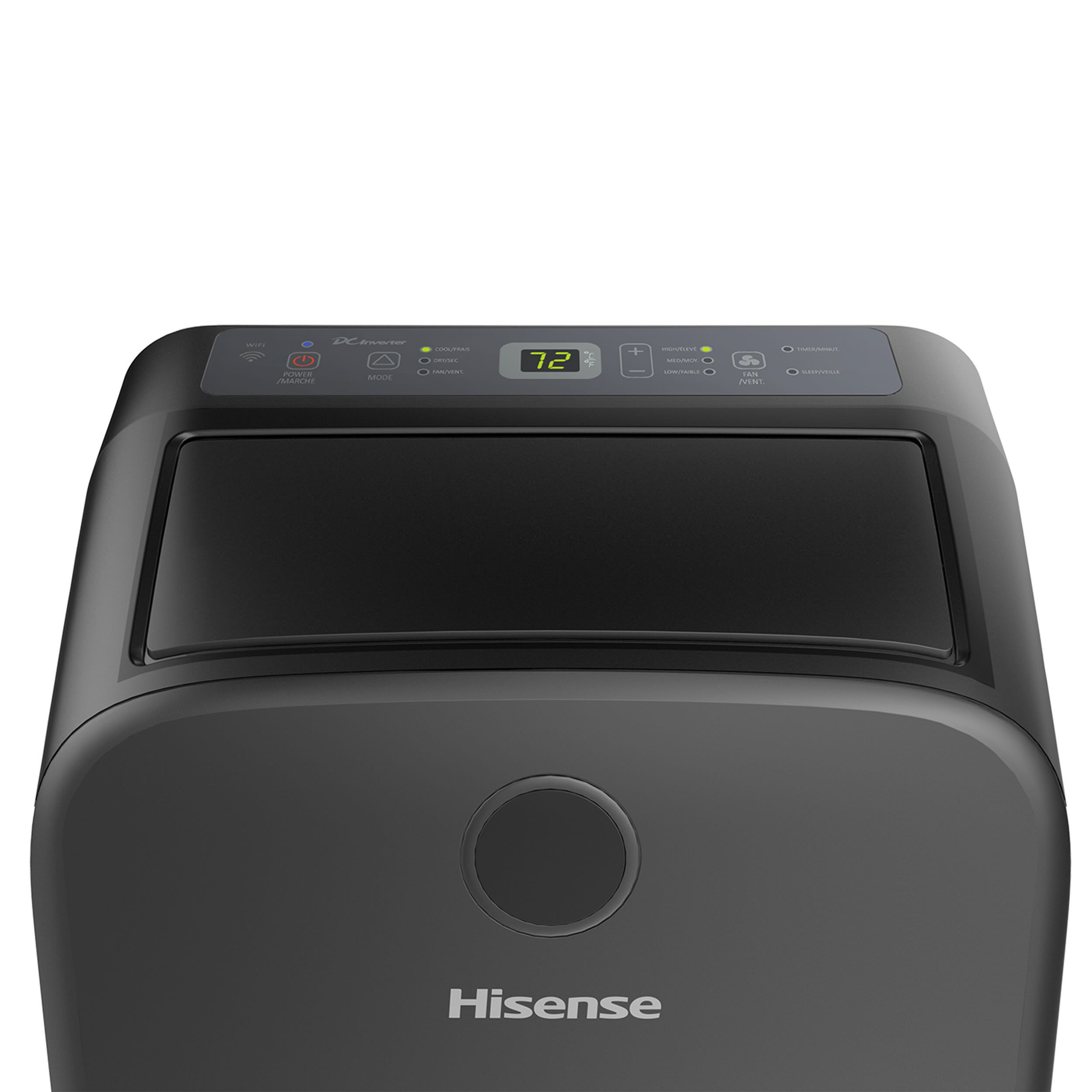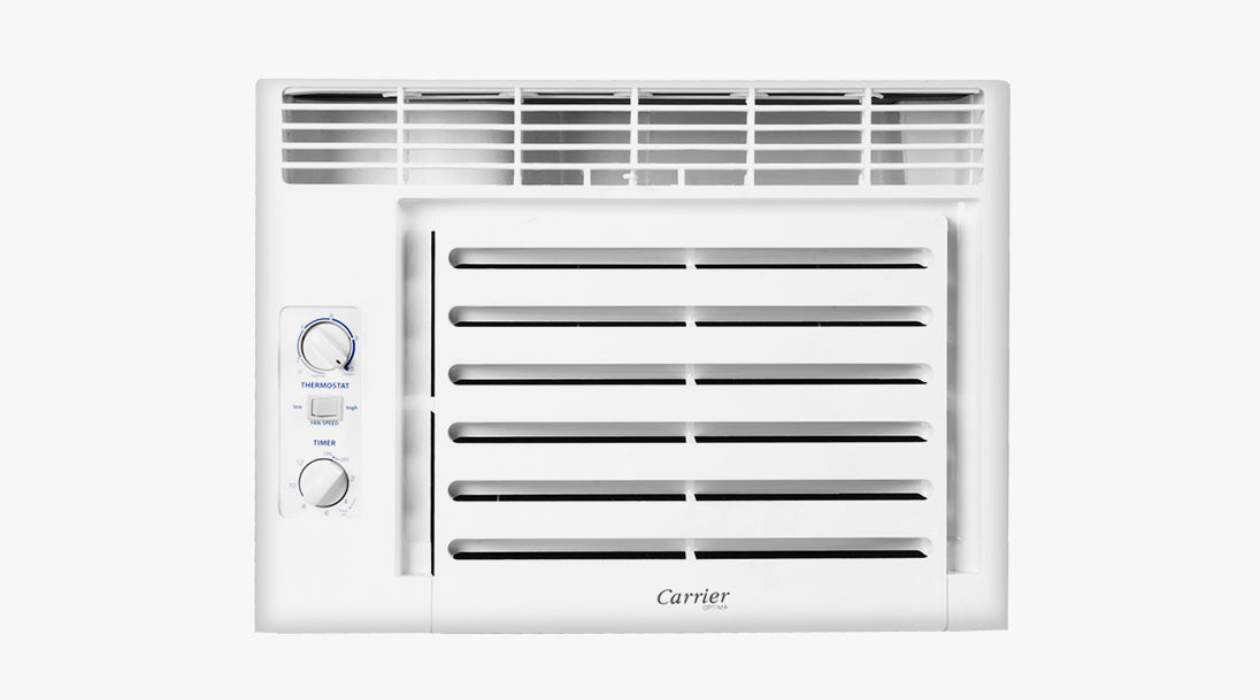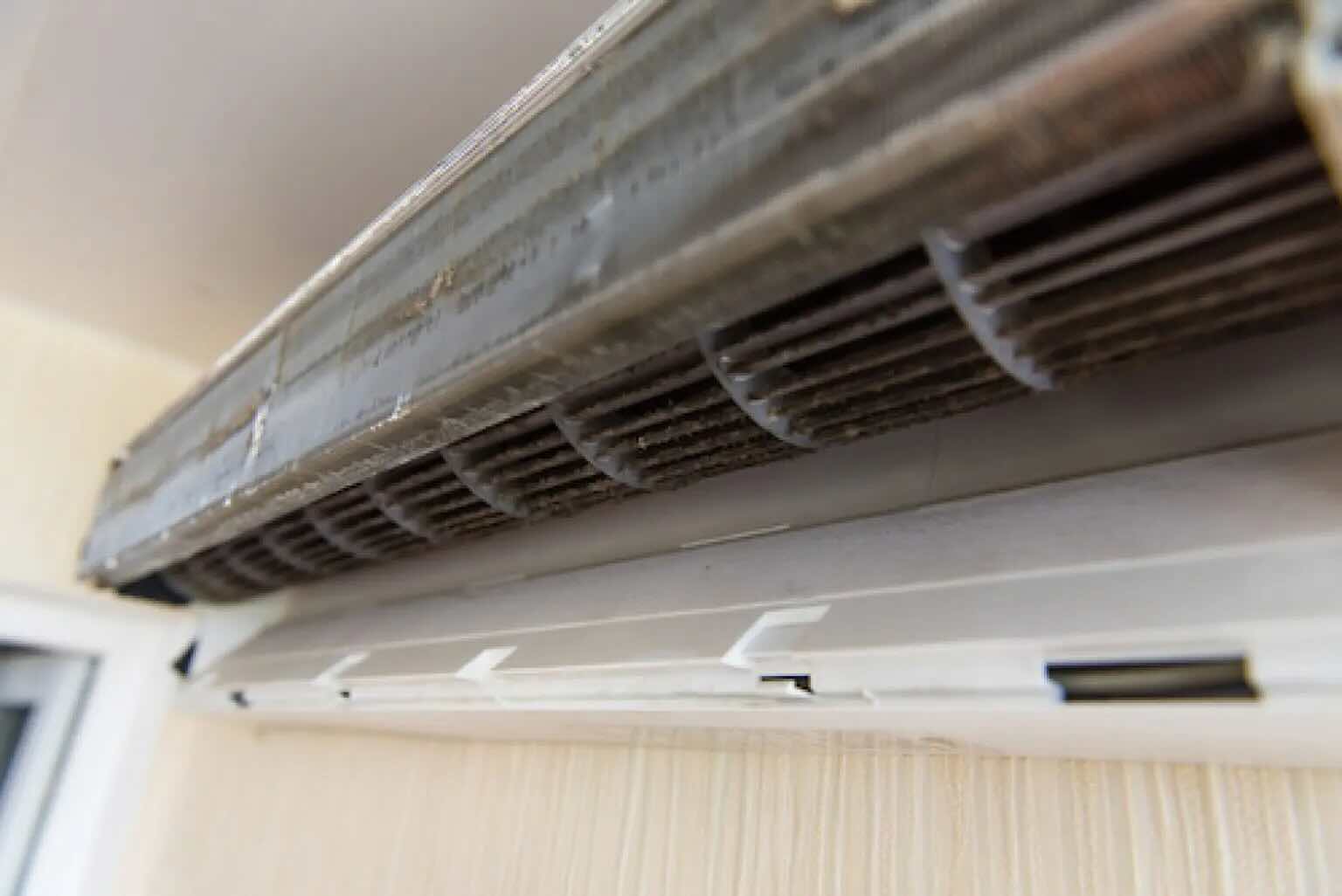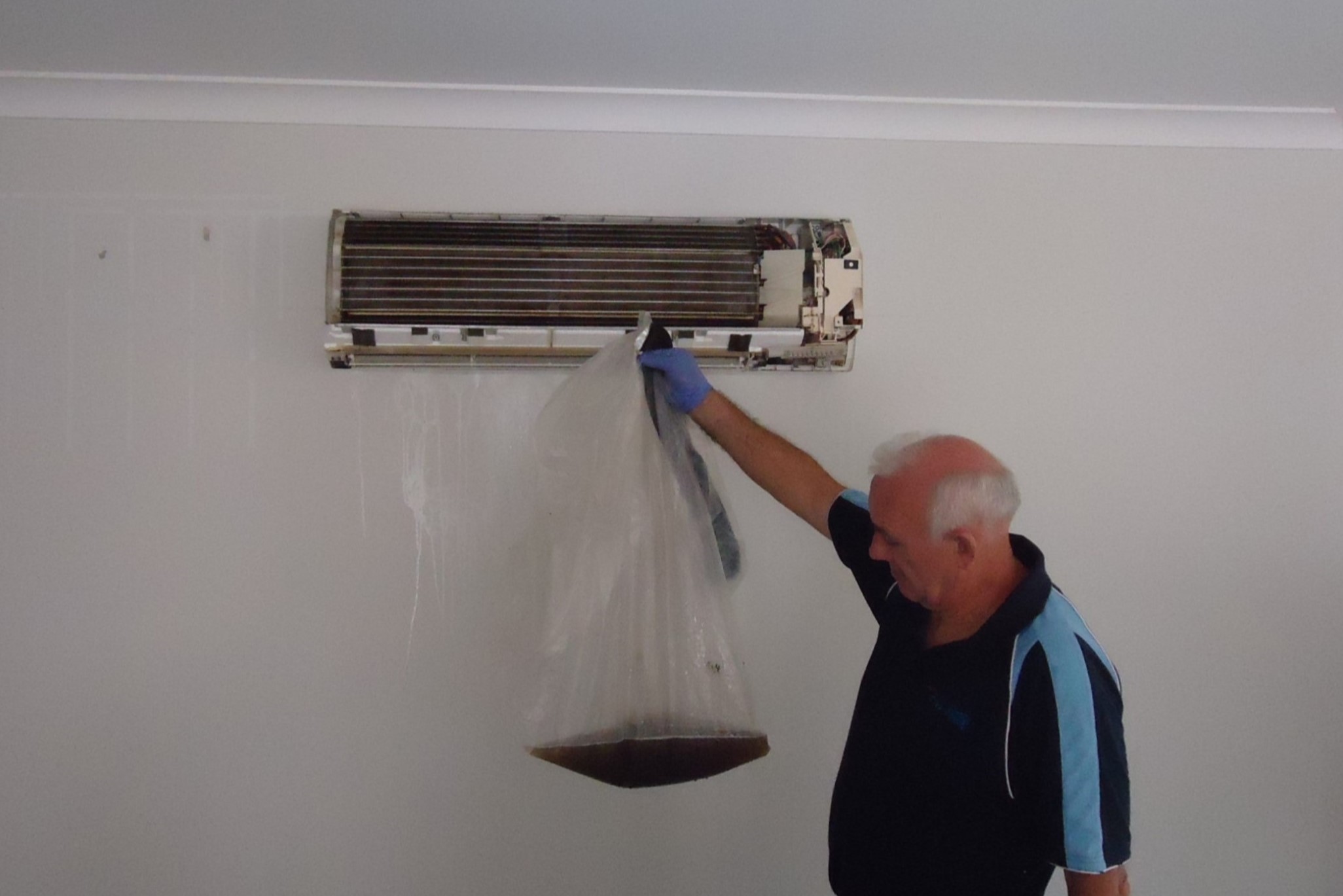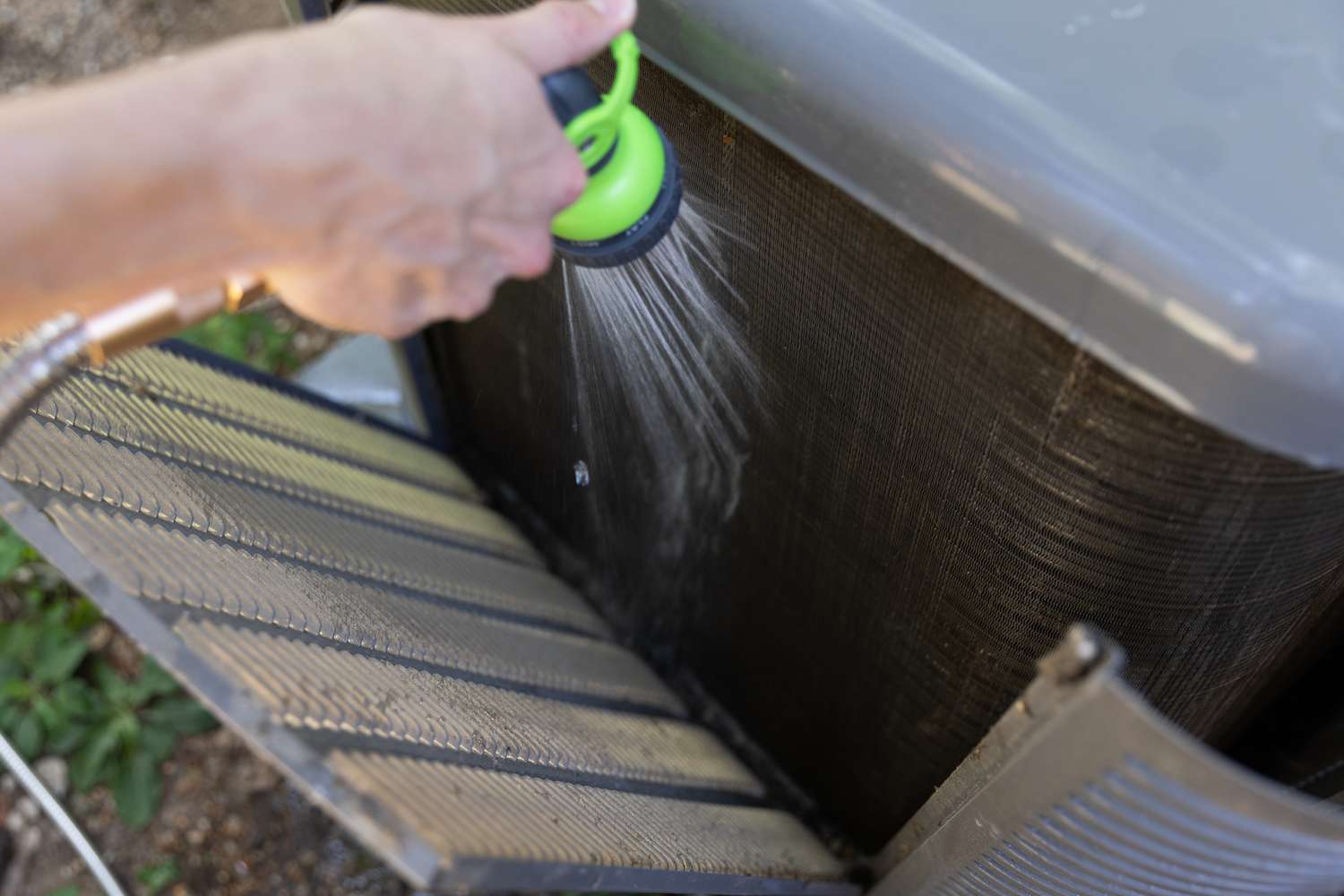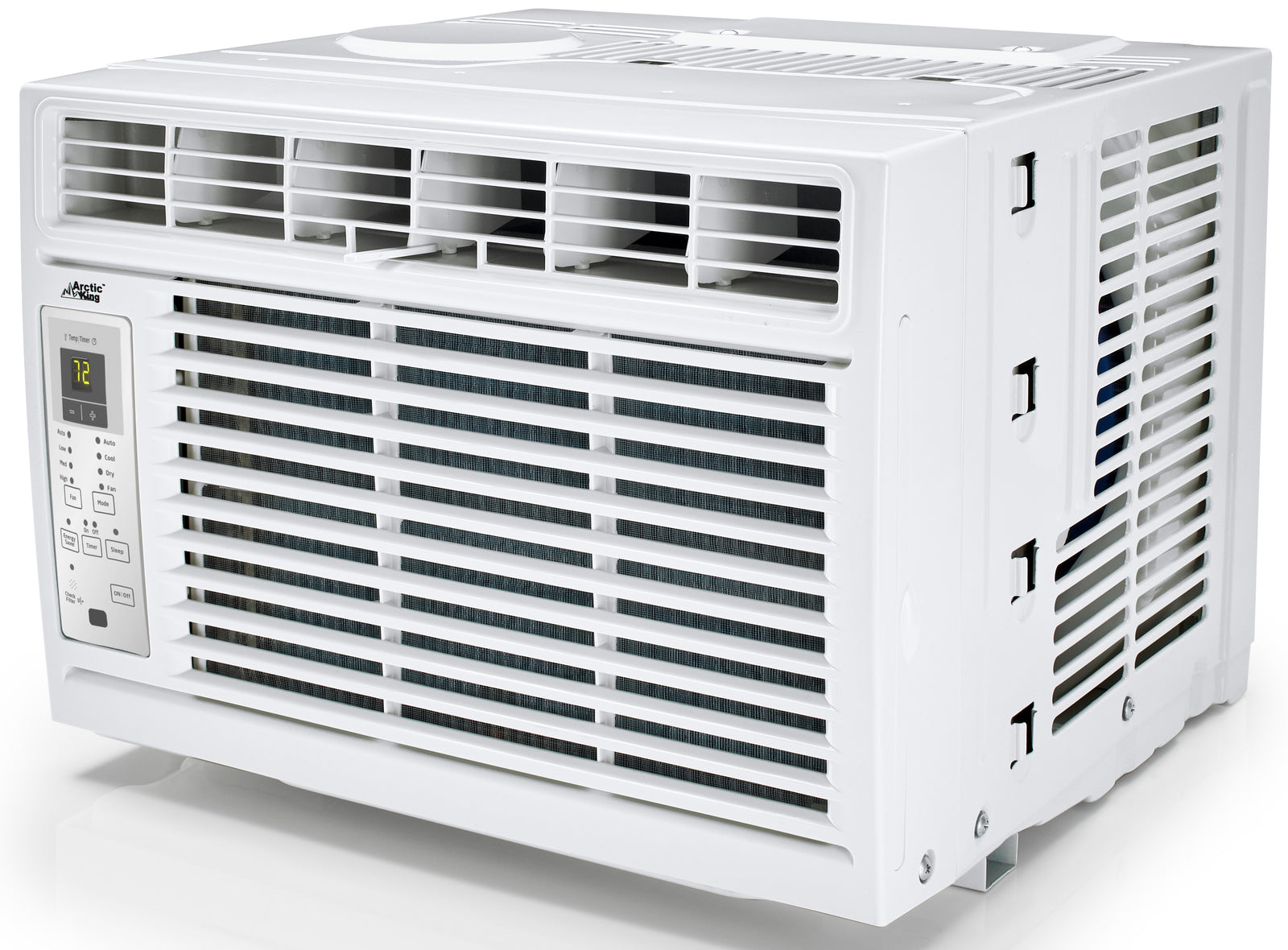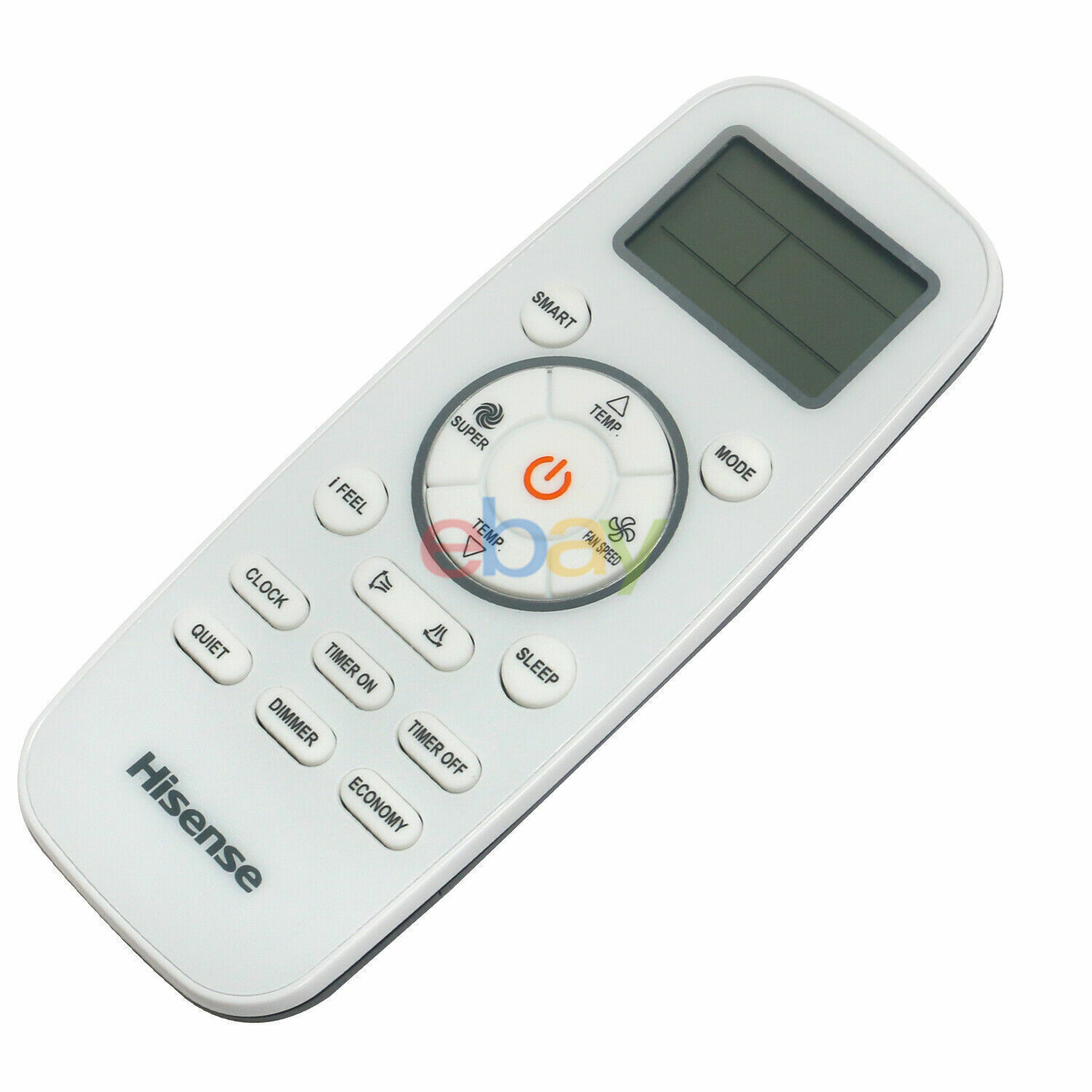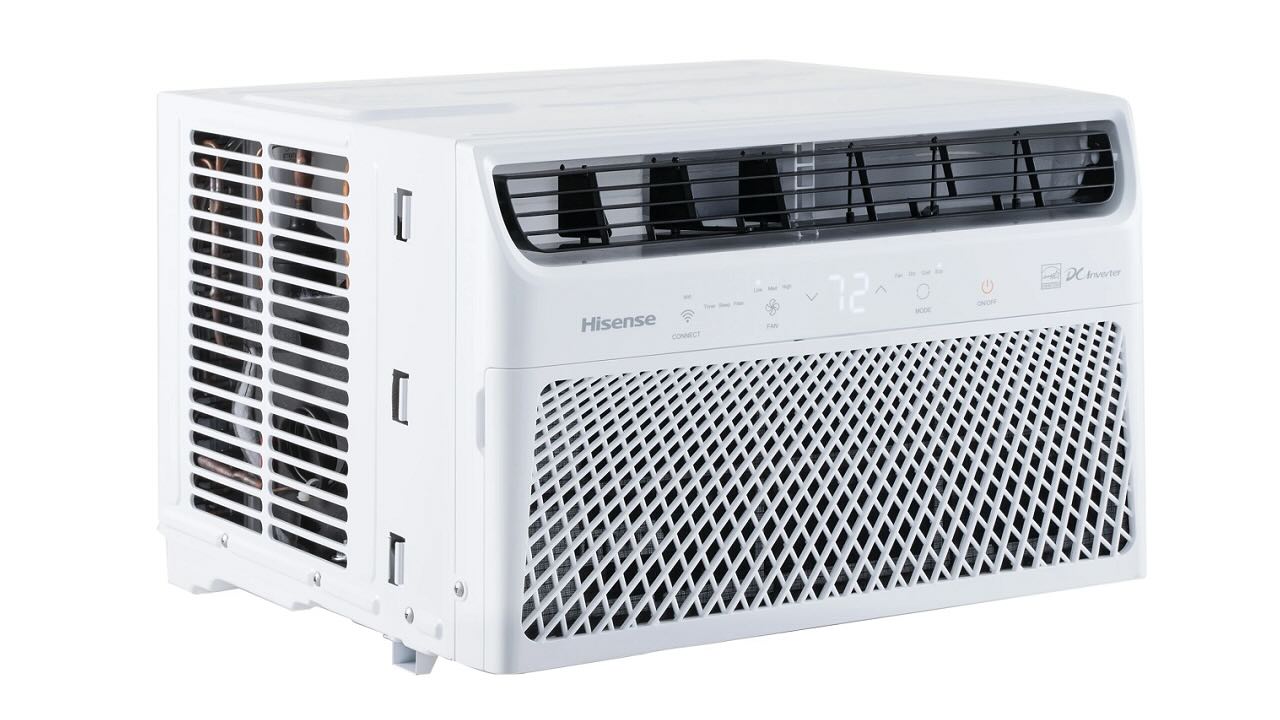Home>Home Maintenance>How To Clean A Hisense Portable Air Conditioner
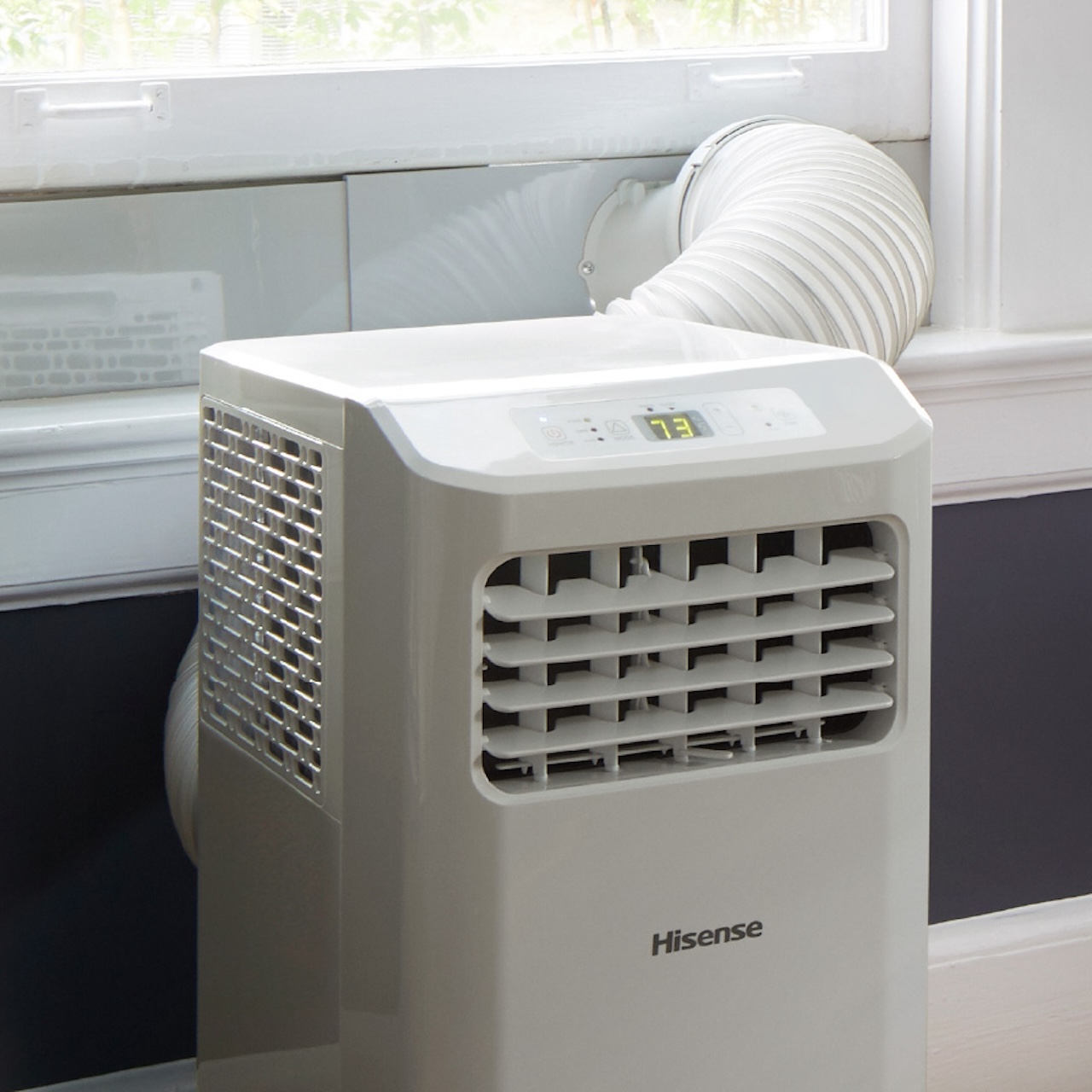

Home Maintenance
How To Clean A Hisense Portable Air Conditioner
Modified: August 25, 2024
Learn how to clean your Hisense portable air conditioner with this comprehensive guide. Keep your home cool and comfortable with regular home maintenance.
(Many of the links in this article redirect to a specific reviewed product. Your purchase of these products through affiliate links helps to generate commission for Storables.com, at no extra cost. Learn more)
Introduction
Welcome to the comprehensive guide on how to clean a Hisense portable air conditioner. As the summer season approaches, it’s essential to keep our homes cool and comfortable. Portable air conditioners are a popular choice for many homeowners due to their convenience and flexibility. However, like any other appliance, they require regular maintenance to ensure optimal performance.
Regular cleaning of your Hisense portable air conditioner not only helps in improving its efficiency but also ensures cleaner air circulation, reducing the risk of allergens and pollutants. In this article, we will provide you with step-by-step instructions on how to effectively clean your Hisense portable air conditioner to keep it running smoothly throughout the summer.
Before proceeding with the cleaning process, it’s important to gather the necessary items and prepare your workspace. Here’s a list of items you’ll need:
- Mild detergent or air conditioner coil cleaner
- Clean cloth or sponge
- Dust mask
- Gloves
- Water hose or bucket of water
- Vacuum cleaner with brush attachment
Once you have all the required items ready, let’s move on to the step-by-step cleaning process for your Hisense portable air conditioner.
Key Takeaways:
- Regularly cleaning your Hisense portable air conditioner’s exterior, air filters, water drainage system, evaporator coil, condenser coil, and fan is crucial for optimal performance and longevity. Incorporate these cleaning routines into your regular home maintenance schedule.
- Following maintenance tips such as cleaning air filters, maintaining proper airflow, checking the water drainage system, and scheduling professional maintenance can prolong the lifespan of your Hisense portable air conditioner and ensure efficient cooling performance.
Preparing for Cleaning
Before diving into the actual cleaning process, it’s important to take a few preliminary steps to ensure safety and efficiency.
Firstly, make sure to turn off your Hisense portable air conditioner and unplug it from the power source. This is crucial to avoid electrical accidents during the cleaning process. Additionally, it’s recommended to wait for the air conditioner to cool down before starting the cleaning process to prevent any burns or injuries.
Next, prepare your workspace by spreading a plastic sheet or old towels on the floor. This will help catch any dirt or water that may drip during the cleaning process and prevent it from damaging your flooring. It’s also a good idea to have a bucket or water hose nearby for easy access to water as you clean.
Wearing gloves and a dust mask is essential to protect yourself from any potential allergens or hazardous particles that may be present in the air conditioner. Cleaning can stir up dust and debris, so it’s better to be safe than sorry.
Lastly, familiarize yourself with the different components of your Hisense portable air conditioner. Remove any loose debris, such as leaves or dust, from the exterior of the unit using a soft brush or vacuum cleaner with a brush attachment. This will prevent these particles from getting inside the air conditioner during the cleaning process.
With these preparations in place, you are now ready to start the cleaning process for your Hisense portable air conditioner. Follow the next steps carefully to ensure a thorough cleaning and optimal performance of your appliance.
Cleaning the Exterior
The first step in cleaning your Hisense portable air conditioner is to focus on the exterior of the unit. Over time, dust, dirt, and other debris can accumulate on the surface, reducing its efficiency. Here’s how you can clean the exterior:
- Start by wiping down the surface of the air conditioner with a clean cloth or sponge dampened with mild detergent and water. Avoid using harsh cleaning agents as they can damage the unit’s finish.
- Gently scrub the surface, paying attention to any stubborn stains or dirt spots. Be careful not to scrub too hard, as you may damage the paint or the plastic housing of the unit.
- Rinse the cloth or sponge frequently to remove any dirt buildup and continue wiping the entire exterior surface until it is clean. Take extra care around the control panel and other delicate areas of the unit.
- Once you have removed all the dirt and grime from the surface, take a dry cloth or towel and thoroughly dry the entire exterior. This will prevent any water from entering the internal components when you turn on the air conditioner.
If there are any stubborn stains or sticky residue that cannot be removed with mild detergent, you can use a specialized air conditioner cleaner. Follow the manufacturer’s instructions on the cleaner’s packaging to ensure safe and effective use.
Remember, it is essential to clean the exterior of your Hisense portable air conditioner regularly to maintain its appearance and prevent the buildup of dirt and debris that can hinder its performance. A clean exterior also helps in prolonging the lifespan of the unit.
With the exterior of your air conditioner now sparkling clean, it’s time to move on to the interior components, starting with the air filters.
Cleaning the Air Filters
The air filters in your Hisense portable air conditioner play a crucial role in maintaining good air quality and efficient cooling. Over time, these filters can accumulate dust, dirt, and other particles, hindering the airflow and reducing the appliance’s performance. Cleaning the air filters is an important step in maintaining your air conditioner. Here’s a simple guide to help you:
- Locate the air filter compartment on your Hisense portable air conditioner. It is usually located at the front or side of the unit.
- Carefully remove the filter(s) from the compartment. Depending on the model, you may have one or more filters.
- Inspect the filters for visible dirt, dust, or debris. If they are lightly soiled, you can clean them with a vacuum cleaner using a brush attachment. Gently run the vacuum cleaner over both sides of the filter to remove loose particles.
- If the filters are heavily soiled, it is recommended to wash them with water and mild detergent. Fill a sink or basin with lukewarm water and a small amount of detergent.
- Submerge the filters in the soapy water and let them soak for about 15-20 minutes. This will help loosen the trapped dirt and grime.
- Gently scrub the filters with a soft brush or your fingers to remove any stubborn dirt. Be careful not to apply too much pressure or scrub too vigorously, as this can damage the filters.
- Rinse the filters thoroughly with clean water to remove any soap residue. Make sure to remove all traces of detergent as it can affect the air quality and cause irritation.
- Allow the filters to air dry completely before reinserting them into the air conditioner. Ensure that they are completely dry to prevent mold or mildew growth.
It is recommended to clean the air filters of your Hisense portable air conditioner every two to four weeks, depending on usage and air quality. Regularly cleaning the filters helps in maintaining efficient cooling performance and ensuring cleaner air circulation.
Now that the air filters are clean, let’s proceed to clean the water drainage system of your Hisense portable air conditioner.
Cleaning the Water Drainage System
Your Hisense portable air conditioner is equipped with a water drainage system that removes condensed water from the cooling process. Over time, this drainage system can become clogged with dirt, algae, or other debris, leading to water leaks or inefficient operation. Cleaning the drainage system is an important step in maintaining your air conditioner. Here’s how you can do it:
- Locate the drainage hole or drainage hose at the back of your Hisense portable air conditioner. This is where the condensed water is collected and drained.
- If there is a drainage hose, detach it from the unit. If there is a plug or cap covering the drainage hole, remove it.
- Inspect the drainage system for any visible blockages. Use a small brush or a pipe cleaner to gently remove any dirt or debris that may be obstructing the flow of water.
- Once you have cleared any blockages, mix a solution of equal parts water and vinegar. This will help remove any remaining dirt, algae, or mildew from the drainage system.
- Using a funnel or a small container, pour the vinegar solution into the drainage hole or hose. Let it sit for about 15-20 minutes to allow the vinegar to break down any deposits.
- After the vinegar has had time to work, flush the drainage system with clean water. You can do this by pouring water into the drainage hole or reconnecting the drainage hose and allowing water to flow through it.
- Continue flushing the system until the water runs clear and free from any vinegar or debris.
- Once the drainage system is clean, make sure to reattach the drainage hose securely or replace the plug or cap on the drainage hole.
Cleaning the water drainage system of your Hisense portable air conditioner should be done regularly to prevent water leaks and ensure the efficient removal of condensed water. A clean drainage system also helps in maintaining the overall performance and longevity of the appliance.
Now that we have cleaned the water drainage system, let’s move on to the next step – removing and cleaning the evaporator coil.
Removing and Cleaning the Evaporator Coil
The evaporator coil in your Hisense portable air conditioner is responsible for cooling the air as it passes through the unit. Over time, the coil can accumulate dirt, dust, and other debris, reducing its efficiency and hindering the cooling process. Cleaning the evaporator coil is essential for maintaining optimal performance. Here’s how you can do it:
- Start by turning off your Hisense portable air conditioner and unplugging it from the power source for safety.
- Locate the access panel that covers the evaporator coil. This panel may be at the front or back of the unit, depending on the model.
- Remove the screws or clips that secure the access panel and carefully take off the panel to expose the evaporator coil.
- Inspect the evaporator coil for any visible dirt or debris. If there is a significant amount of dirt, use a soft brush or a vacuum cleaner with a brush attachment to gently remove the loose particles.
- If the coil is heavily soiled, it may require a more thorough cleaning. Mix a solution of equal parts water and mild detergent in a spray bottle.
- Spray the cleaning solution onto the coil, paying particular attention to areas with stubborn dirt or grime. Avoid saturating the coil with excessive liquid, as this can lead to water damage.
- Allow the cleaning solution to sit on the coil for a few minutes to break down any dirt or debris.
- After the solution has had time to work, use a soft brush or a toothbrush to gently scrub the coil. Start from the top and work your way down, being careful not to apply too much pressure that could damage the fragile fins of the coil.
- Rinse the evaporator coil thoroughly with clean water to remove any detergent residue. You can use a spray bottle or a gentle stream of water from a hose.
- Once the coil is clean, let it air dry completely before reassembling the access panel.
Cleaning the evaporator coil of your Hisense portable air conditioner is crucial for maintaining efficient cooling and ensuring optimum performance. Regular cleaning helps in removing dirt and debris that can obstruct airflow and impact the appliance’s overall efficiency.
Now that we have cleaned the evaporator coil, let’s move on to the next step – cleaning the condenser coil.
To clean a Hisense portable air conditioner, start by turning it off and unplugging it. Then, remove the filter and wash it with warm, soapy water. Use a vacuum to clean the vents and coils. Finally, wipe down the exterior with a damp cloth.
Cleaning the Condenser Coil
The condenser coil in your Hisense portable air conditioner is responsible for releasing heat to the outside environment. Over time, the condenser coil can become dirty and obstructed by dust, dirt, and other debris, reducing its ability to cool efficiently. Regular cleaning of the condenser coil is essential for maintaining optimal performance. Here’s how you can do it:
- Start by turning off the Hisense portable air conditioner and unplugging it from the power source for safety.
- Locate the condenser coil, which is usually situated at the back of the unit or on the outer side.
- Gently brush off any loose debris, such as leaves or dirt, from the surface of the condenser coil. You can use a soft brush or a vacuum cleaner with a brush attachment for this step.
- If the condenser coil is heavily soiled, use a water hose with low pressure to rinse the coil. Ensure that the water pressure is gentle to avoid bending or damaging the fins of the coil.
- If there are stubborn stains or dirt buildup on the condenser coil, prepare a solution of equal parts water and mild detergent.
- Dip a soft brush into the detergent solution and gently scrub the surface of the condenser coil. Pay extra attention to areas with stubborn dirt or grime.
- Rinse the condenser coil thoroughly with clean water to remove any detergent residue. Again, ensure that the water pressure is not too high to prevent damage to the coil.
- Allow the condenser coil to air dry completely before reassembling the air conditioner and plugging it back into the power source.
Cleaning the condenser coil of your Hisense portable air conditioner is vital for maintaining efficient cooling and optimal performance. A clean condenser coil allows for effective heat dissipation and overall energy efficiency of the appliance.
Now that we have cleaned the condenser coil, let’s move on to the next step – cleaning the fan.
Cleaning the Fan
The fan in your Hisense portable air conditioner plays a crucial role in circulating cool air throughout the room. Over time, dust, dirt, and other debris can accumulate on the fan blades, affecting its efficiency and performance. Cleaning the fan is an essential step in maintaining optimal airflow. Here’s how you can do it:
- Start by turning off the Hisense portable air conditioner and unplugging it from the power source.
- Locate the fan grille or cover that protects the fan blades. Depending on the model, you may need to remove screws or clips to access the fan.
- Once the fan grille is accessible, gently remove it to expose the fan blades.
- Using a soft cloth or brush, carefully wipe away any visible dust or dirt on the fan blades. Make sure to reach all sides of the blades and remove any debris that may be stuck in between.
- If the fan blades are heavily soiled, you can use a mild detergent solution to clean them more effectively. Dip a cloth in the solution and gently wipe the blades, taking care not to apply excessive pressure.
- Rinse the fan blades with clean water to remove any detergent residue.
- Allow the fan blades to air dry completely before reassembling the fan grille or cover.
Cleaning the fan of your Hisense portable air conditioner is essential for maintaining proper airflow and ensuring the efficient circulation of cool air in the room. A clean fan enhances the overall performance of the appliance and contributes to a comfortable cooling experience.
Now that we have cleaned the fan, we are ready to reassemble the air conditioner and get it back in working order. Let’s move on to the next step.
Reassembling the Air Conditioner
Now that you have successfully cleaned all the necessary components of your Hisense portable air conditioner, it’s time to reassemble the unit. Follow these steps to ensure a proper reassembly:
- Make sure all the cleaned components are dry before proceeding with the reassembly. This includes the air filters, evaporator coil, condenser coil, fan, and any removed panels or grilles.
- Carefully place the air filters back into their respective compartments in the air conditioner. Ensure they are securely in place.
- If you had removed any access panels or grilles, reattach them by screwing in or clipping them back into position.
- Double-check that all components are properly aligned and secured. This will ensure that the air conditioner functions smoothly.
- Plug the Hisense portable air conditioner back into the power source and turn it on.
- Allow the air conditioner to run for a few minutes to ensure everything is working as expected.
- Monitor the performance of the air conditioner and check for any unusual noises or issues during operation. If you notice anything out of the ordinary, double-check your reassembly and consult the user manual for troubleshooting guidance.
By reassembling the air conditioner correctly, you ensure that all the cleaned components are back in place and ready to deliver efficient and effective cooling.
Now that your Hisense portable air conditioner is cleaned and reassembled, it’s important to follow some tips for proper maintenance to keep it in optimal condition.
Tips for Proper Maintenance
To ensure that your Hisense portable air conditioner continues to run smoothly and efficiently, it’s important to follow these maintenance tips:
- Clean the air filters regularly: Dust and dirt can quickly accumulate on the air filters, hindering airflow and reducing cooling performance. Clean the filters every two to four weeks or as needed to maintain optimal air quality and efficiency.
- Keep the exterior clean: Regularly wipe down the exterior of the air conditioner to remove dirt, dust, and other debris. This not only improves the appearance but also prevents blockages that can affect its performance.
- Maintain proper airflow: Ensure that there is ample space around the air conditioner for proper ventilation. Avoid blocking the air intake or exhaust vents, as this can restrict airflow and hinder cooling efficiency.
- Check the water drainage system: Periodically inspect the drainage hole or hose and remove any blockages or clogs. Keeping the drainage system clean prevents water leakage and potential damage to the unit.
- Inspect the condenser coils: Regularly check the condenser coils for dirt or debris buildup. Cleaning them as necessary ensures optimal heat dissipation and improves cooling efficiency.
- Monitor the fan performance: Listen for any unusual noises or vibrations coming from the fan. If you notice any issues, inspect the fan and ensure it is clean and functioning properly.
- Schedule professional maintenance: Consider scheduling annual professional maintenance for your Hisense portable air conditioner. An HVAC technician can perform a thorough inspection, cleaning, and maintenance to keep your unit in top condition.
- Follow the manufacturer’s guidelines: Always refer to the user manual or manufacturer’s guidelines for specific maintenance instructions and recommendations for your Hisense portable air conditioner model.
By following these maintenance tips, you can prolong the lifespan of your Hisense portable air conditioner, improve its energy efficiency, and ensure optimal cooling performance throughout its usage.
Remember, regular maintenance is key to keeping your air conditioner in excellent condition and enjoying a comfortable and cool environment in your home.
Conclusion
Congratulations! You have learned how to effectively clean your Hisense portable air conditioner and maintain its optimal performance. By following the step-by-step instructions provided in this guide, you can ensure that your air conditioner operates efficiently, provides cleaner air circulation, and keeps your home cool and comfortable during the summer season.
Regular maintenance of your Hisense portable air conditioner, including cleaning the exterior, air filters, water drainage system, evaporator coil, condenser coil, and fan, is crucial for its longevity and overall effectiveness. Incorporating these cleaning routines into your regular home maintenance schedule will help prevent issues such as reduced cooling performance, water leakage, or even costly repairs.
Remember, safety is paramount throughout the cleaning process, so make sure to unplug the unit and wear protective gear like gloves and a dust mask. Additionally, follow the manufacturer’s guidelines and recommendations for specific cleaning instructions and maintenance schedules.
By properly maintaining your Hisense portable air conditioner, you can extend its lifespan, improve energy efficiency, and ensure optimal cooling performance. So, take the time to clean and care for your air conditioner regularly, and enjoy a comfortable and refreshing environment in your home all summer long.
Thank you for reading our comprehensive guide. We hope you found it helpful and informative. Stay cool!
Frequently Asked Questions about How To Clean A Hisense Portable Air Conditioner
Was this page helpful?
At Storables.com, we guarantee accurate and reliable information. Our content, validated by Expert Board Contributors, is crafted following stringent Editorial Policies. We're committed to providing you with well-researched, expert-backed insights for all your informational needs.
